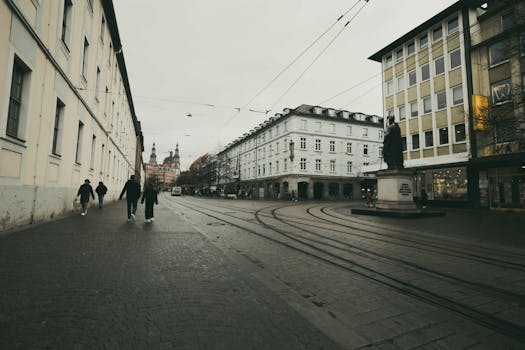
Urban Green Spaces: The Future of Outdoor Living in European Cities by 2025
Urban Green Spaces are the future of outdoor living in European cities. As the world becomes increasingly urbanized, the importance of green spaces in cities cannot be overstated. Green spaces, such as parks, gardens, and green roofs, provide numerous benefits to both the environment and urban residents. In this article, we will explore the significance of urban green spaces in European cities and their role in shaping the future of outdoor living.
Introduction to Urban Green Spaces
Urban green spaces are areas of vegetation in urban environments, including parks, gardens, green roofs, and other types of green infrastructure. These spaces provide a range of ecosystem services, including air and water filtration, climate regulation, and habitat creation for urban wildlife. Urban green spaces also offer numerous benefits to human health and well-being, including reduced stress, improved mental health, and increased opportunities for physical activity.
Benefits of Urban Green Spaces
The benefits of urban green spaces are numerous and well-documented. Some of the most significant advantages of urban green spaces include:
- Improved Air Quality: Urban green spaces can help to filter out pollutants and particulate matter from the air, improving air quality and reducing the risk of respiratory diseases.
- Climate Regulation: Green spaces can help to regulate the urban microclimate, reducing the urban heat island effect and mitigating the impacts of climate change.
- Increased Biodiversity: Urban green spaces can provide habitat for a wide range of plant and animal species, increasing biodiversity and supporting ecosystem services.
- Improved Mental Health: Spending time in nature has been shown to have numerous benefits for mental health, including reduced stress, improved mood, and increased self-esteem.
- Increased Opportunities for Physical Activity: Urban green spaces can provide opportunities for physical activity, including walking, cycling, and sports, reducing the risk of chronic diseases and improving overall health and well-being.
European Cities and Urban Green Spaces
European cities are at the forefront of urban green space development, with many cities incorporating green infrastructure into their urban planning strategies. Some of the most notable examples of urban green spaces in European cities include:
- Paris, France: The City of Light is home to numerous urban green spaces, including the famous Luxembourg Gardens and the Bois de Vincennes.
- London, United Kingdom: London is home to many urban green spaces, including Hyde Park, Regent’s Park, and the Olympic Park.
- Berlin, Germany: Berlin is known for its vibrant urban green spaces, including the Tiergarten and the Tempelhofer Feld.
- Amsterdam, Netherlands: Amsterdam is famous for its canals and green spaces, including the Vondelpark and the Erasmuspark.
Challenges and Opportunities for Urban Green Spaces
Despite the numerous benefits of urban green spaces, there are also challenges and opportunities for their development and maintenance. Some of the most significant challenges include:
- Urbanization and Land Use: The increasing demand for urban land and the pressure to develop green spaces for other uses, such as housing and infrastructure, can threaten the existence of urban green spaces.
- Climate Change: Climate change can have significant impacts on urban green spaces, including increased temperatures, changing precipitation patterns, and increased risk of extreme weather events.
- Funding and Maintenance: Urban green spaces require significant funding and maintenance to ensure their continued health and functionality.
However, there are also opportunities for innovation and collaboration in urban green space development, including:
- Green Infrastructure: The use of green infrastructure, such as green roofs and walls, can help to mitigate the urban heat island effect and improve air quality.
- Community Engagement: Community engagement and participation in urban green space development can help to ensure that green spaces meet the needs of local residents and promote a sense of ownership and stewardship.
- Technology and Innovation: The use of technology and innovation, such as smart city initiatives and urban agriculture, can help to improve the efficiency and effectiveness of urban green space development and maintenance.
Conclusion
In conclusion, urban green spaces are a vital component of sustainable and livable European cities. As the world becomes increasingly urbanized, the importance of green spaces in cities will only continue to grow. By understanding the benefits and challenges of urban green spaces, and by leveraging opportunities for innovation and collaboration, we can work towards creating a future where urban green spaces are a fundamental part of urban planning and development.






